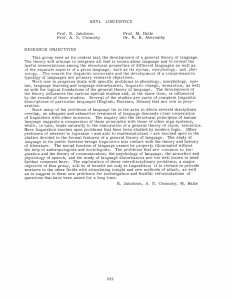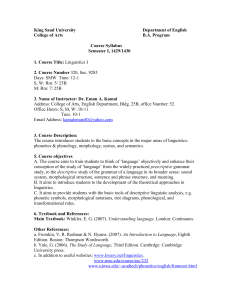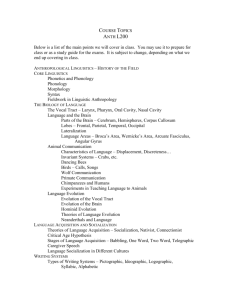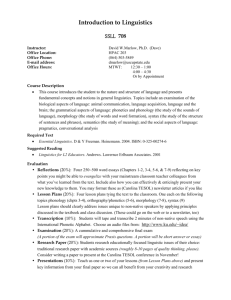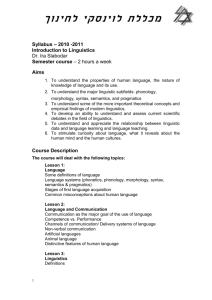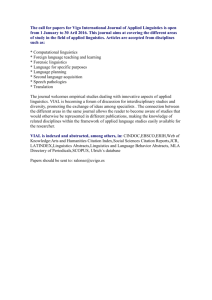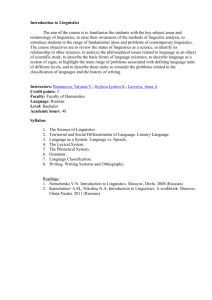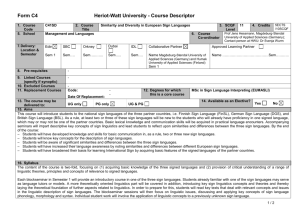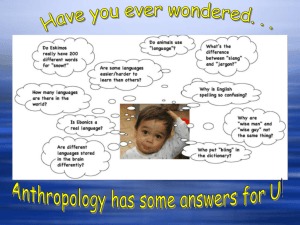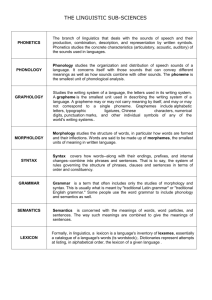Introduction to Linguistics (part of Advanced Extension English
advertisement
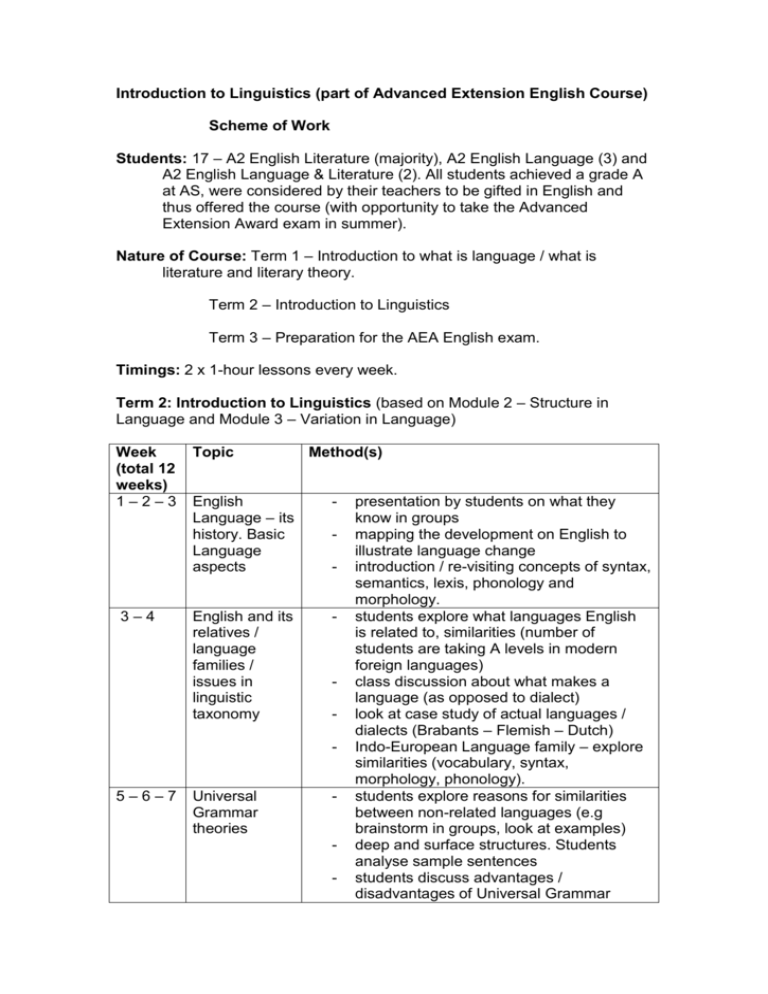
Introduction to Linguistics (part of Advanced Extension English Course) Scheme of Work Students: 17 – A2 English Literature (majority), A2 English Language (3) and A2 English Language & Literature (2). All students achieved a grade A at AS, were considered by their teachers to be gifted in English and thus offered the course (with opportunity to take the Advanced Extension Award exam in summer). Nature of Course: Term 1 – Introduction to what is language / what is literature and literary theory. Term 2 – Introduction to Linguistics Term 3 – Preparation for the AEA English exam. Timings: 2 x 1-hour lessons every week. Term 2: Introduction to Linguistics (based on Module 2 – Structure in Language and Module 3 – Variation in Language) Week (total 12 weeks) 1–2–3 3–4 Topic Method(s) English Language – its history. Basic Language aspects - English and its relatives / language families / issues in linguistic taxonomy - - - 5–6–7 Universal Grammar theories - - presentation by students on what they know in groups mapping the development on English to illustrate language change introduction / re-visiting concepts of syntax, semantics, lexis, phonology and morphology. students explore what languages English is related to, similarities (number of students are taking A levels in modern foreign languages) class discussion about what makes a language (as opposed to dialect) look at case study of actual languages / dialects (Brabants – Flemish – Dutch) Indo-European Language family – explore similarities (vocabulary, syntax, morphology, phonology). students explore reasons for similarities between non-related languages (e.g brainstorm in groups, look at examples) deep and surface structures. Students analyse sample sentences students discuss advantages / disadvantages of Universal Grammar 7–8 Written Language - 9 – 10 11 – 12 Reading / Writing neurolinguistic implications - Comparative Linguistics - - - history of writing students discuss differences between spoken and written language phoneme / grapheme relationships students look at alphabetic writing, syllabic writing and ideograms (examples from English, Italian, Hebrew, Aztec, Japanese Kana and Kanji) introduction to neurolinguistics explore what brain does when reading or writing differences between reading syllabic and alphabetic scripts on one hand, and ideograms on other hands concepts in language (e.g. time in Amerindian languages compared to English, or past tenses in Italian and English) Semantic issues across languages case study – students choose languages to compare and research Resources: Ethnologue website (catalogue of all world’s languages) Native speakers of Dutch/Brabants Native speaker of Japanese (colleague) Native speaker of Farsi (student) Kanji and Devanagari character cards See booklist & wesbites on the introduction to the pilot
